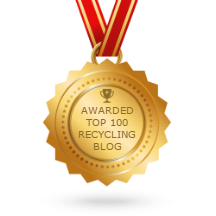Today, the popularity of the “green” lifestyle parallels worldwide recognition of the plight of the environment. The planet is in trouble: Every living system is in decline. On this basis, more and more ordinary folks around the globe are coming together to strategize ways to protect natural resources from over extraction.
Meanwhile, the economy, too, is in decline. The need for savings is greater than ever. These conditions make eco-friendly and cost-effective practices a matter of urgency.
The good news is that going green can make a huge difference with little effort and surprising savings. This is the magic of energy efficiency. The largest energy consumers in a typical office or business are heating, cooling and electricity. Let’s examine these areas for green improvements that will make both business owners and Mother Nature happy. Here are a few suggestions for those who want to help save the environment while saving precious revenues for the stuff that counts within your small, medium or large business.
Heating
Heating devices such as radiators, warm-air registers and baseboard heaters operate most efficiently under particular conditions. Even models designed for efficiency may perform poorly if upkeep is ill-maintained. Make sure to clean heaters periodically, and clean or replace any filters once monthly. Of course, this applies to air conditioning units as well.
Don’t under estimate the importance of a fresh filter; using one can cut up to 15% off the utility bill. This is especially true for those whose business is done in colder climates, whose heating costs are disproportionately high. Cleaning a filter is easy: Just hose off the dust and let it dry.
Cooling
Clearly, cutting off the air conditioning when it’s blazing hot both inside and out is sometimes not an option. However, even apparently small improvements can lead to big savings. For instance, it is not necessary to run the entirety of one’s AC system. Because colder air falls, it is wise to cool only the upstairs floor of a two-story office building or to only cool the front customer areas. The cooled air naturally flows to the warmer downstairs, giving you more bang for your buck.
Another wallet-friendly tip is to watch out for air leaks. This is extremely important for both heating and cooling. Cover even small cracks as soon as possible with certified non-toxic insulation. The better insulated your business storefront, the more service you get for your money. Cooling poorly insulated work buildings is like running your car AC full blast with the windows down.
Electricity
A company electricity bill is a direct reflection of energy practices in the office. In addition to heating and cooling, the wattage drawn by lights, appliances and electronic devices collectively can be quite significant. The next time an old bulb burns out, make a beeline to the store for a pack of Compact Fluorescent Lights (CFLs), energy-efficient light bulbs that nicely typify the happy synthesis of environmental and economical benefits in a simple company change. It is estimated that global adoption of CFLs could cut 2-3% of worldwide electricity expenditures!
The ecological footprint of cutting-edge, energy-hungry gadgets like tablets, laptops and mobile phones is little-publicized, but there is a real and growing toll on budgets and the environment. Unplugging devices not in use can trim hidden costs off a bloated electricity bill. Also, look for an ENERGY STAR label when shopping for electronic equipment for the company lunchroom.
Original By Clay Miller - ways2gogreenblog.com


































 The Nebraska Department of Environmental Quality (DEQ) awarded 54 grants totaling more than $1.6 million to support projects across the state dedicated to recycling, litter cleanup and education.
The Nebraska Department of Environmental Quality (DEQ) awarded 54 grants totaling more than $1.6 million to support projects across the state dedicated to recycling, litter cleanup and education. 




